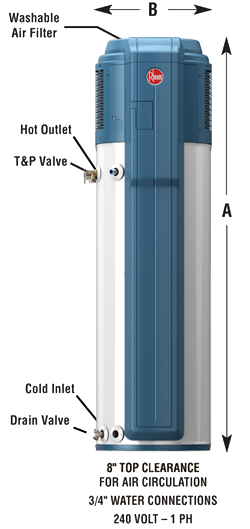Air To Water Heat Pump System Explained

Air source heat pumps for floor heating and central cooling simply speaking are to use a unit of air source heat pump to generate hot water of no more than 60 in winter which circulates in a special pipe as a heat medium to heat the floor decoration layer and to raise the temperature of the ground through the heat transfer of radiation and convection.
Air to water heat pump system explained. Air to water heat pumps may be best suited to new build properties. The fan blows air over a coil which contains a working fluid that absorbs the warmth. An air to water heat pumps system consist of four major elements that allow the refrigerant to pass from the liquid state to the gas. An air source heat pump does not create heat.
This is condensed using an electric compressor to increase its temperature before being passed through a heat exchanger to warm water for the central heating. It could cost less if the heat pump is included as part of the building specification rather than having to retrofit underfloor heating later on. So instead of pumping heat inside your home. These pumps take heat from the outside air and feed it into your home through fans.
The created heat can be used for space heating or as a hot water supply for the house. Air to water heat pumps air to water heat pump. 07 2020 globe newswire based on global market insights inc report the europe air to water heat pump market was estimated at 2 5 billion in 2019 and is slated. This system is more commonly known as an air air heat pump because it takes heat from outdoor air and transfers it to indoor air ducts.
A fan passes air over the evaporator the refrigerant absorbs heat from the outside air. A fan powered unit is used to extract warmth from the outside air to provide space heating and hot water for the home. This versatile part reverses the flow of the refrigerant so that the system begins to operate in the opposite direction. Although an air source heat pump replaces a boiler as the home s heat source the way it works is very different.
The high pressure high temperature vapour refrigerant leaves the compressor but this time heads into a plate heat exchanger. A compressor a condenser an expansion valve and an evaporator. Essentially air to water heat pumps operate in a similar way to fridges but in reverse. Air to water heat pumps take heat from the outside air and transfer it to a water based system.
Water source heat pumps on the other hand work on basically the same principle as air source heat pumps but they extract heat from a body of water rather than the air. This type of heat pump works best in moderate climates. On the other side of the plate heat exchanger water is being cycled through a hot water storage tank. They do this by cycling water through a system of pipes that is laid out at the bottom of a body of water.
It simply moves it from one place to another through the vapour compression cycle or refrigeration process to make it more useable. How air source heat pumps work. These units work in a similar manor but without the reversing valve. Cool water enters the heat exchanger from the tank and as it passes through the heat exchanger it absorbs the heat from the hot refrigerant so it will.
The key to allowing the air air heat pump to also cool is the reversing valve.














































